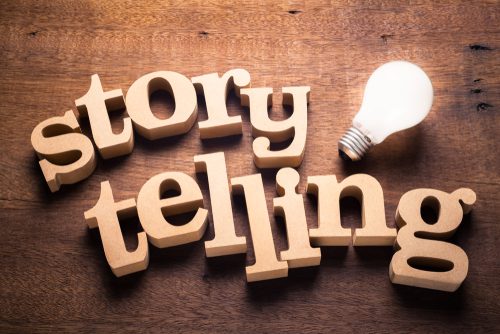
The Power of Storytelling in Web Design
At Blue Whale Media, we pride ourselves on being Blackpool’s experts for website design and development. One of the key aspects that we focus on when creating a website is storytelling. Storytelling in web design can have a powerful impact on the overall user experience and we believe it is an essential component of any successful website. In this blog post, we will explore the importance of using storytelling in web design and how it can benefit your business. So, let’s dive in!
Engage your audience through storytelling
By telling a story, you can create a sense of relatability and empathy, allowing your audience to connect with your brand on a deeper level. It also helps to humanize your brand, making it more approachable and trustworthy. Whether it’s through visuals, text, or multimedia, incorporating storytelling into your website design can help you stand out from the competition and leave a lasting impression on your audience.
There are many great examples of websites that effectively use storytelling to engage their audience. Take Airbnb, for example. Their website is not just about finding accommodation but is also about experiencing new places and cultures. By showcasing the stories of their hosts and the unique experiences they offer, Airbnb is able to create a sense of community and inspire travellers to book with them. Similarly, TOMS Shoes uses their website to tell the story of their One for One program, where for every pair of shoes sold, they donate a pair to a child in need. By sharing these stories, TOMS Shoes is able to create a sense of purpose and social responsibility, appealing to consumers who care about making a difference in the world.
Increase user experience through storytelling
As a professional web design and development company we have seen first-hand impact storytelling can have on a website’s user experience. By weaving a compelling narrative throughout a website, users are able to connect with the brand on a deeper level and engage with the content in a more meaningful way. This, in turn, leads to increased user engagement, longer visit times, and ultimately, more conversions.
One way to incorporate storytelling into website design is through the use of visuals. By using high-quality images, videos, and animations, brands can create an immersive experience for users that draws them into the story being told. Additionally, incorporating elements such as scrolling animations, parallax effects, and interactive elements can help to further enhance the storytelling experience and keep users engaged from start to finish.
A great example of a website that uses storytelling to enhance user experience is Patagonia. Through their website, they share the stories of the people and places behind their products, creating a sense of connection and community with their audience. Another great example is the website for Humaan, which uses a unique, interactive storybook format to showcase their portfolio and highlight their brand values. By incorporating storytelling into their website design, both of these brands have been able to create a more engaging and memorable user experience, ultimately leading to increased brand loyalty and conversions.
Establish brand identity with storytelling
At Blue Whale Media, we firmly believe that storytelling is a powerful tool in web design. It is no secret that people are naturally drawn to stories; they have the ability to captivate and engage us, evoking emotions and fostering a connection. By incorporating storytelling into web design, we can establish and communicate a brand’s identity in a way that resonates with users on a deeper level.
Storytelling allows us to go beyond the surface-level messaging of a brand and delve into the essence of what it stands for. By crafting a narrative that embodies the values, mission, and personality of a brand, we can create a more meaningful and impactful experience for users. This can translate into increased brand loyalty, higher retention rates, and ultimately, a stronger bottom line. In short, storytelling is a way to establish a brand’s identity and differentiate it from the competition in a way that is both authentic and compelling.
The technical side of storytelling in web design
As web developers, it’s our job to ensure that storytelling is seamlessly integrated into the website design. This means using the right combination of visuals, content, and user experience to create a cohesive narrative that guides the user through the website. We consider factors such as page layout, font choice, and colour scheme, to create a design that reinforces the brand’s message and story.
We also pay close attention to the technical aspects of storytelling, such as page load speed and mobile responsiveness, to ensure that the user’s experience is not interrupted. In addition, we use search engine optimization (SEO) techniques to ensure that the content is easily discoverable by search engines, which helps the brand connect with potential customers.
Conclusion
In conclusion, storytelling is a powerful tool in web design that can help brands establish a deeper connection with their audience. By crafting a narrative that embodies the brand’s values and personality, we can create a more meaningful and impactful experience for users. At Blue Whale Media, we understand the importance of storytelling in web design, and we use our expertise to create designs that are both compelling and effective. Contact us today to learn more about our web design services.




